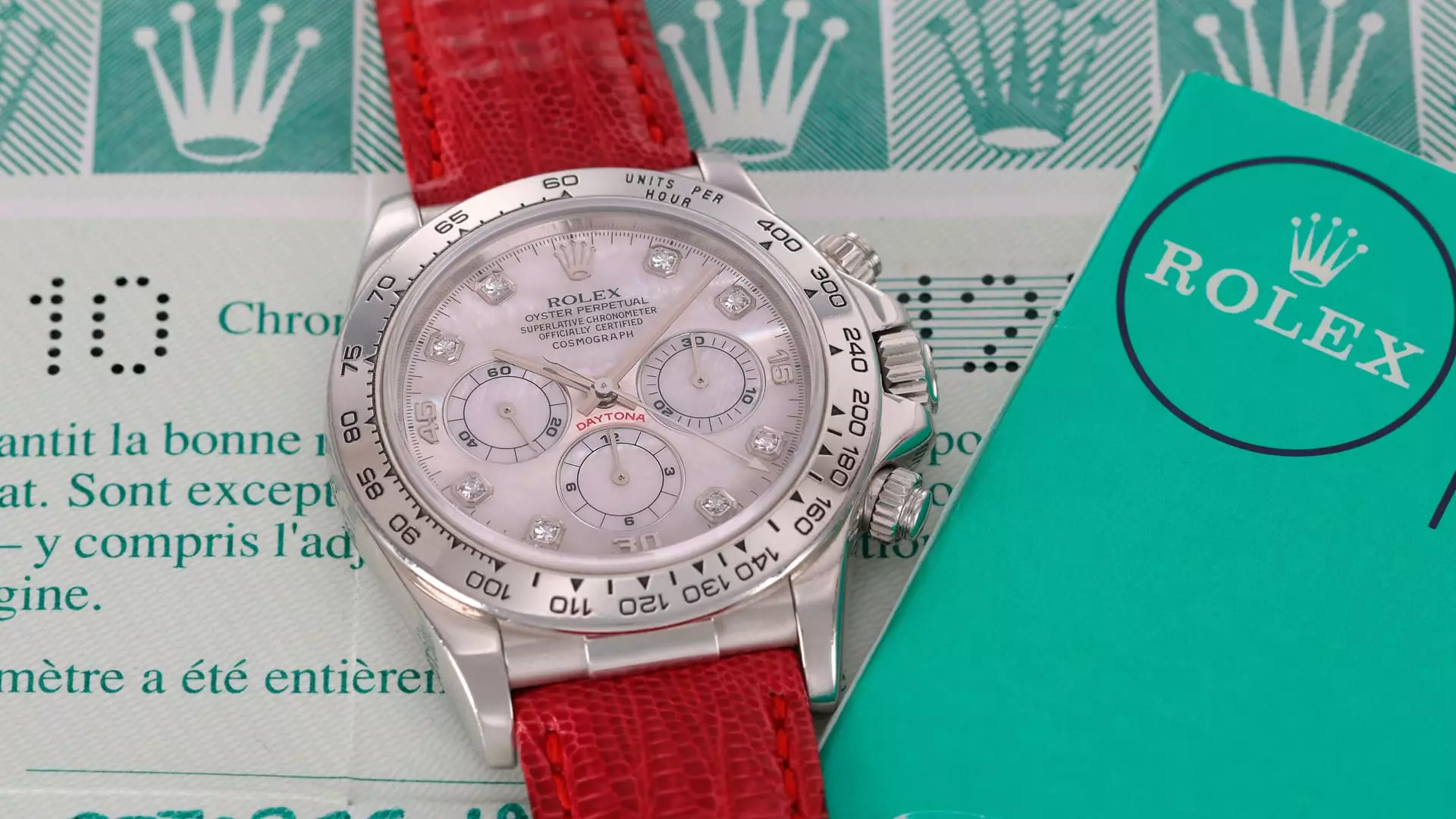In the world of luxury watches, few items can rival the prestige and allure of a Rolex. Yet, amongst the vast selection of iconic timepieces, the upcoming auction of a 1999 platinum Rolex Daytona represents something extraordinarily unique. Set to take the stage at Sotheby’s in Geneva with an estimated value of up to $1.7 million, this watch is not merely a tool for measuring time; it embodies the quintessence of exclusivity, craftsmanship, and rarity in the luxury market.
What sets this Daytona apart from its more ubiquitous counterparts is its bespoke origin. Unlike standard models, which are mass-produced, this specific watch was privately commissioned—a rarity when it comes to Rolex. The luxury watchmaker’s tradition is steeped in secrecy and selectivity, making commissioned pieces like this a peek behind a curtain usually closed to the average collector. As Pedro Reiser, a senior watch specialist at Sotheby’s, puts it, “There are other brands which might be more flexible and do these kinds of exercises… but not in the space of Rolex,” a statement that highlights the uniqueness of this auction piece and the allure it generates.
A Tantalizing History Buried in Myths
As with most luxury items, a certain mythology surrounds this harmonious timepiece. It is rumored that this watch was created during the tenure of Patrick Heiniger, Rolex’s transformative CEO from 1992 to 2008. Under his leadership, Rolex blossomed into a symbol of luxury, but the specifics of this tantalizing watch remain tangled in ambiguity. While some speculate that Heiniger might have personally commissioned this platinum version or possessed a similar model, concrete evidence is scant—Reiser himself warns that such tales are more folklore than fact. This uncertainty adds an additional layer of mystique to the watch, enticing potential buyers to not just acquire an object, but also a piece of captivating lore.
The notion of rarity continues to elevate the appeal of the platinum Daytona. Only four known pieces were created for a singular family, each showcasing unique design elements. The auctioned piece notably bears the distinction of a diamond-set dial, making it a singular masterpiece among its silicon and gold relatives. The rarity is not just in its luxurious materials, but in the whole story the watch encapsulates—a narrative that intersects personal history with corporate legacy.
The Investment Landscape for Luxury Timepieces
As society evolves, so too do the motivations of its affluent collectors. Watches like this platinum Daytona are increasingly perceived not merely as luxury items, but as investment vehicles. According to Knight Frank’s latest wealth index, luxury watches have spiked over 125% in value in the past decade, landing them just behind rare whisky and high-end designer furniture in terms of financial appreciation. Even amidst recent fluctuations in price increases—only 1.7% over the last year—the five-year growth rate of 52.7% signifies watches as a bulwark for those seeking long-term assets.
Yet, what does this mean for the future of luxury timepieces? As younger collectors and international buyers flood the market, they bring their unique perspectives and expectations. This demographic shift suggests that timeless brands like Rolex must engage with evolving cultural values—or risk losing relevance in an increasingly competitive luxury market.
Ultimately, the upcoming auction for the 1999 platinum Daytona reflects more than just the dynamics of luxury watches; it embodies a cultural shift. Wealth is being invested in narratives as much as it is in tangible goods, and collectors are seeking more than just prestige—they want the story that accompanies the watch. This auction is poised to shatter preconceived notions of value, proving that in the realm of luxury, rarity may well be the ultimate currency.
This will not just be another record-breaking auction; it’s a chance to witness history—an event that embodies why certain pieces of craftsmanship transcend mere utility and enter the sublime realm of art and investment.

